Ladakh on the Edge: The Silent Crisis in the Land of Passes
Flash floods, fragile mountains, and unchecked development are reshaping Ladakh’s desert ecology—yet the crisis remains under the radar.
A Forgotten Crisis in the High Himalaya
When television screens beam images of floods in Himachal or J&K, there is an outpouring of national sympathy. Relief funds pour in, governments scramble to respond, and environmentalists raise alarms. But when Ladakh is battered, the story fades quickly—if it appears at all. And yet, in this cold desert of passes and monasteries, the changes unfolding are no less catastrophic.
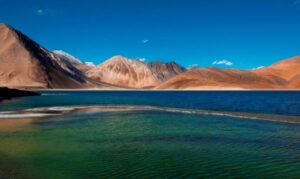
Lessons Unlearnt: When Nature Warned Before
This is not the first time Ladakh has been on its knees before the fury of water. The 2010 Leh cloudburst killed over 200 people, flattening homes and washing away centuries-old monasteries and gompas. It was a disaster that should have taught us the dangers of unplanned urbanization and reckless construction in fragile terrain. In Lamayuru and Kargil, flash floods have repeatedly turned sacred land into fields of debris, cutting off villages for weeks. Each tragedy was a warning and a reminder that Ladakh’s harsh desert is not built to handle tampering.
When Greening Becomes a Curse
Ironically, some of Ladakh’s greatest dangers come from well-meaning initiatives. In an era when afforestation is celebrated everywhere, voices are rising to “green” Ladakh. But Ladakh is not Himachal, nor Uttarakhand, it is a cold desert where scarcity has shaped both culture and survival.
Blanketing its slopes with trees may seem visionary, but it risks inviting heavier rainfall, destabilizing the thin soil, and accelerating erosion. Green cover here could spell more landslides, not fewer. What sustains Ladakh are not pine plantations, but its indigenous systems—zings (small canals), sacred springs, and ice stupas, those brilliant artificial glaciers that Sonam Wangchuk and others have innovated. These solutions understand the desert’s logic: adapt to scarcity, don’t fight it.
The Double-Edged Sword of Development
Today, bulldozers and drilling machines echo across valleys that once heard only the murmur of streams and chants of monasteries. The Zojila Tunnel, hailed as Asia’s longest, is carving its way through fragile rock. The Leh airport expansion prepares to welcome millions more tourists, even as Leh town gasps under existing waste and water stress. Along the Shyok and Galwan valleys, roads race ahead for strategic security which is vital for the nation, but heavy on the land.
Yes, Ladakh deserves connectivity, energy, and opportunity. But at what cost? Every tunnel blasted shakes the geology of fragile slopes. Every widened road spills debris into rivers, choking them. Every hydropower scheme interferes with streams that communities have depended upon for centuries. Development here feels less like balance and more like an assault disguised as progress.
Siachen: The Costliest Glacier on Earth
If Ladakh’s rivers are groaning, its glaciers are crying. The Siachen Glacier, often called the world’s highest battlefield, is a staggering reminder of how geopolitics collides with ecology. Every day, it costs India over ₹5–6 crore just to sustain troops on that frozen expanse. Helicopters ferry supplies, kerosene barrels are dropped, and waste—much of it non-biodegradable lies buried in the ice, poisoning the glacier that feeds the Nubra and Shyok rivers. The strategic importance of Siachen is undeniable—guarding the Saltoro Ridge, preventing incursions after Pakistan’s betrayal in Kargil, or countering China’s creeping presence. Yet one has to ask: what is the strategy worth, if the very glacier we are defending is dying beneath our boots? Military survival here comes at the cost of environmental collapse, as rising temperatures and constant human pressure accelerate the melting of this vital ice field.
Imagine, if India, Pakistan, and China could one day shift Siachen from being the world’s most militarized zone to a zone of peace and environmental protection. It sounds utopian, yes. But then again, what strategy, what importance, if the earth itself is weeping? If Siachen dies, what will remain to defend?
The Human Cost in the Desert
For those who don’t live here, climate change is a chart, a report, a UN declaration. For Ladakhis, it is a lived reality. Ask the families in Lamayuru who watched their fields of barley disappear in an hour. Ask the monks at monasteries where cracks snake through prayer halls built centuries ago. Ask the Changpa nomads of Changthang, whose pashmina goats struggle as grasslands shrink and water sources vanish.
In Ladakh, climate change is not the future, it is the present. Each season feels less predictable, each cloud more threatening. The old rhythm of life—planting barley, herding yaks, praying for good snow on glaciers is losing its anchor.
Rethinking Progress in the Himalaya
The answer is not to halt development but to reimagine it. Solar power here must mean decentralized village grids, not mega parks that gobble land. Tourism must shift to homestays and cultural trails, not hotels and resorts that strain groundwater. Road projects should enforce slope stabilization, debris management, and environmental clearance in spirit, not just on paper. Above all, Ladakh must not be forced into the mold of “green Himalaya” with pine trees and highways. Its desert ecology is its strength, not its weakness.
A Call to Listen
It is often said that deserts are silent. Ladakh disproves that. Its rivers, its glaciers, its winds—they all speak. And right now, they are speaking louder than ever. Flash floods, landslides, cracks in ancient monasteries, dying pastures, these are voices. The tragedy is not that Ladakh is silent, but that we are deaf. Ladakh does not need sympathy alone. It needs respect for its fragility, its uniqueness, its culture of living lightly. If we continue to treat it as an empty canvas for tunnels, hotels, and forests, Ladakh will remind us of our folly in the harshest way possible.
The lesson of Ladakh is clear: survival here has always meant humility before nature. The tragedy is that in our rush for development, we seem to have forgotten humility altogether.
The contributor of this article is Tashi Sharma and can be reached at 9906970167
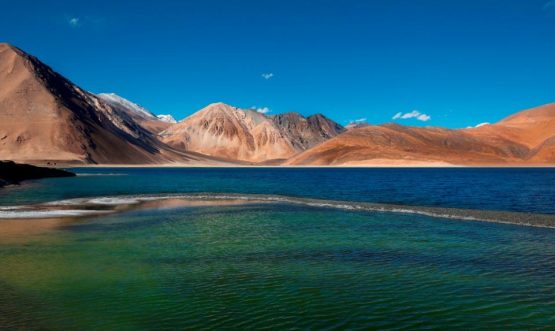
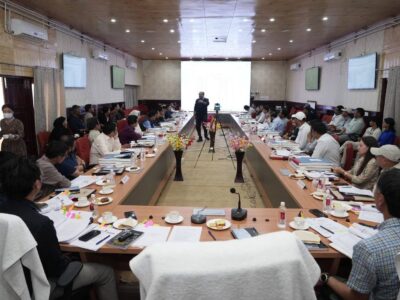
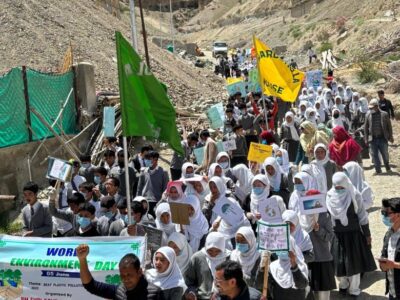




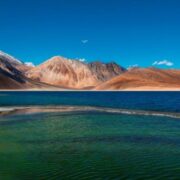

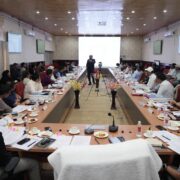
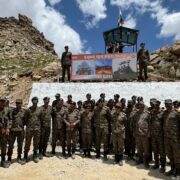




Comments